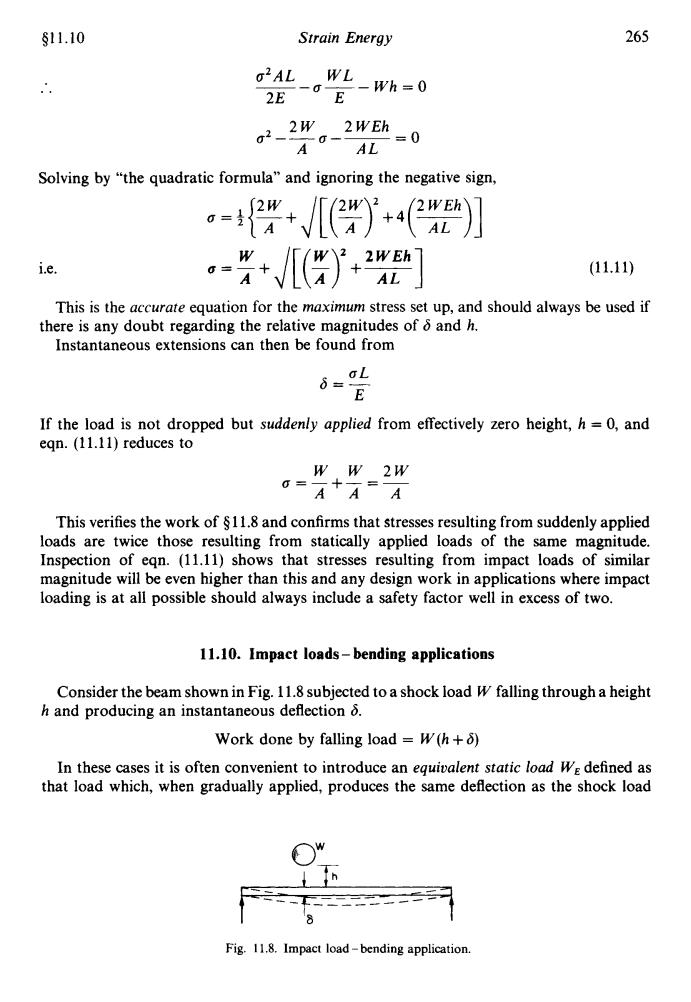正在加载图片...

§11.10 Strain Energy 265 02AL WL 一E 2E -Wh=0 g2- 2W 2WEh A AL 0 Solving by "the quadratic formula"and ignoring the negative sign, i.e. -++2] (11.11) This is the accurate equation for the maximum stress set up,and should always be used if there is any doubt regarding the relative magnitudes of 6 and h. Instantaneous extensions can then be found from i=aL E If the load is not dropped but suddenly applied from effectively zero height,h =0,and egn.(11.11)reduces to WW 2W o-A+A=A This verifies the work of $11.8 and confirms that stresses resulting from suddenly applied loads are twice those resulting from statically applied loads of the same magnitude. Inspection of egn.(11.11)shows that stresses resulting from impact loads of similar magnitude will be even higher than this and any design work in applications where impact loading is at all possible should always include a safety factor well in excess of two. 11.10.Impact loads-bending applications Consider the beam shown in Fig.11.8 subjected to a shock load W falling through a height h and producing an instantaneous deflection 8. Work done by falling load W(h+6) In these cases it is often convenient to introduce an equivalent static load WE defined as that load which,when gradually applied,produces the same deflection as the shock load Fig.11.8.Impact load-bending application.$11.10 Strain Energy 265 U=AL WL 2E E __- a--Wh=O 2W 2WEh 02---a-- =O A AL Solving by “the quadratic formula” and ignoring the negative sign, i.e. u =E+ A J[(Z>’+T] (11.11) This is the accurate equation for the maximum stress set up, and should always be used if Instantaneous extensions can then be found from there is any doubt regarding the relative magnitudes of 6 and h. If the load is not dropped but suddenly applied from effectively zero height, h = 0, and eqn. (11.11) reduces to w w 2w a=--+-=- AA A This verifies the work of 4 11.8 and confirms that stresses resulting from suddenly applied loads are twice those resulting from statically applied loads of the same magnitude. Inspection of eqn. (11.11) shows that stresses resulting from impact loads of similar magnitude will be even higher than this and any design work in applications where impact loading is at all possible should always include a safety factor well in excess of two. 11.10. Impact loads - bending applications Consider the beam shown in Fig. 11.8 subjected to a shock load W falling through a height h and producing an instantaneous deflection 6. Work done by falling load = W(h + 6) In these cases it is often convenient to introduce an equivalent static load WE defined as that load which, when gradually applied, produces the same deflection as the shock load h -- - / _-___ ---_ ______--- H Fig. 11.8. Impact load - bending application